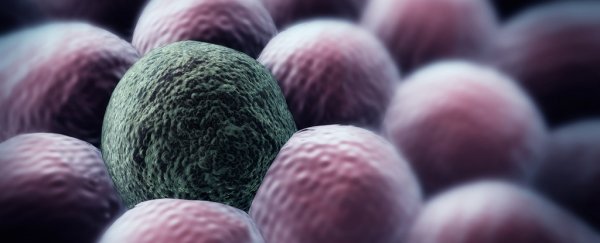While conventional cancer chemotherapy involves administering the maximum tolerated dose of medication to the patient in the hope of destroying as many cancer cells as possible, a less aggressive approach to fighting the disease could offer improved outcomes, according to a new study.
Researchers in the US have developed a new approach to fighting cancerous cells called adaptive therapy. Rather than trying to do as much damage to cancer cells as possible, the idea is to combat tumours with lower doses, keeping chemo-resistant cells in check by maintaining a living population of cells that remain sensitive to cancer-killing drugs.
"[T]here is a natural tendency to use high-dose therapy based on the assumption that each patient receives maximum benefit by killing as many cancer cells as possible," said oncologist Robert Gatenby from the Moffitt Cancer Centre in Florida.
"However, according to evolutionary principles, high-dose therapy is the least likely to be successful in controlling the tumour for any length of time because it intensely selects for resistant cells and allows them to grow rapidly because the treatment has eliminated all of their competitors."
In other words, adaptive therapy, which the researchers have so far trialled only on mice, requires a bit of a mind-shift: rather than attempting to kill off cancer entirely, the strategy would become one of controlled mitigation – helping the patient live with the disease in a sustainable, continually treatable way.
To test the approach against conventional chemotherapy, the scientists experimented on mice with two different kinds of cancer – triple-negative and ER+ breast cancer. They tried three strategies: standard maximum dose, adaptive therapy with lowering doses as the tumour responds (AT–1), and an alternative adaptive therapy with skipped doses as the tumour responds (AT–2).
The findings, reported in Science Translational Medicine, show that tumour growth initially decreased in all three approaches. But the cancer regrew when standard chemo dosage stopped and when doses were skipped in AT–2.
However, the continual lowering doses in AT–1 resulted in a long-term stabilisation of the tumour, to the point where treatment was able to eventually be withdrawn in the majority of animals. These mice lived significantly longer than those receiving standard chemo regimen or AT–2 dosing.
To monitor the tumours and their response to the medication, the researchers employed magnetic resonance imaging and used algorithms to calculate dosages based on the scan data. According to Gatenby, this approach is similar to how farmers use computers to help them manage pest infestations in their crops.
"People who do pest management are way ahead of those who do cancer therapy," he told Alice Park at Time. "I don't think it's unreasonable to think that eventually computer models can become highly prevalent for patients to help guide their treatment."
And that's exactly what a new study at Moffitt is looking into: implementing the first clinical trial of adaptive therapy on a group of patients with prostate cancer. If these trials turn out to be as successful in humans as they have been in mice – and patients can also warm to the idea of living with small amounts of cancer inside their bodies – this just might be the beginning of a fundamentally new approach to fighting the deadly disease.
"We tend to think of cancers as a competition between the tumour and the host," Gatenby told Time, "but at the level of the cancer cell, cancer cells are mostly competing with each other."
